Learn the handshake early, and the city will honor you as one of its own. That was my first lesson in Chicago, where Old Style beer and a shot of Jeppson’s Malört serves as a conversation starter, a quick way to make friends, an invitation into an inner circle. (And, if you’re lucky, a beer knocked off your tab for supporting Chicago institutions.) Shot-and-beer combos can be found anywhere, but none feel so rooted in a city’s identity as the Chicago Handshake. The famously foul-tasting Malört is almost exclusively a Chicagoan indulgence; a map of Malört distribution shows how comically centralized the grapefruit-scented drain cleaner is in Chicago proper — and almost nowhere else. Its containment is something of a modern marvel (though it’s more likely that most parts of the country have no interest in acquiring the taste), and its following is what makes Chicago one of the most interesting drinking cities I’ve ever been to.
The bitter taste of wormwood was exactly what I needed to cleanse myself of worry on a quick vacation stop in Chicago. For four nights, I chased restaurants on my bucket list, and found new ones. I found an educational experience I’d longed for. I found a sandwich worthy of obsession. I found a taste for Malört. Here’s what I ate:
Au Cheval
I’m waiting in the shade and surrounded by fresh beer kegs in the alleyway between Green and Halsted streets, just outside the site of what many consider the best burger in America. The entire corner is redolent of bacon, as though the secret to Au Cheval’s overwhelming popularity were pumping its environs with sweet maple smoke — a twist on the decades-old urban legend of the hyperoxygenated Las Vegas casino.
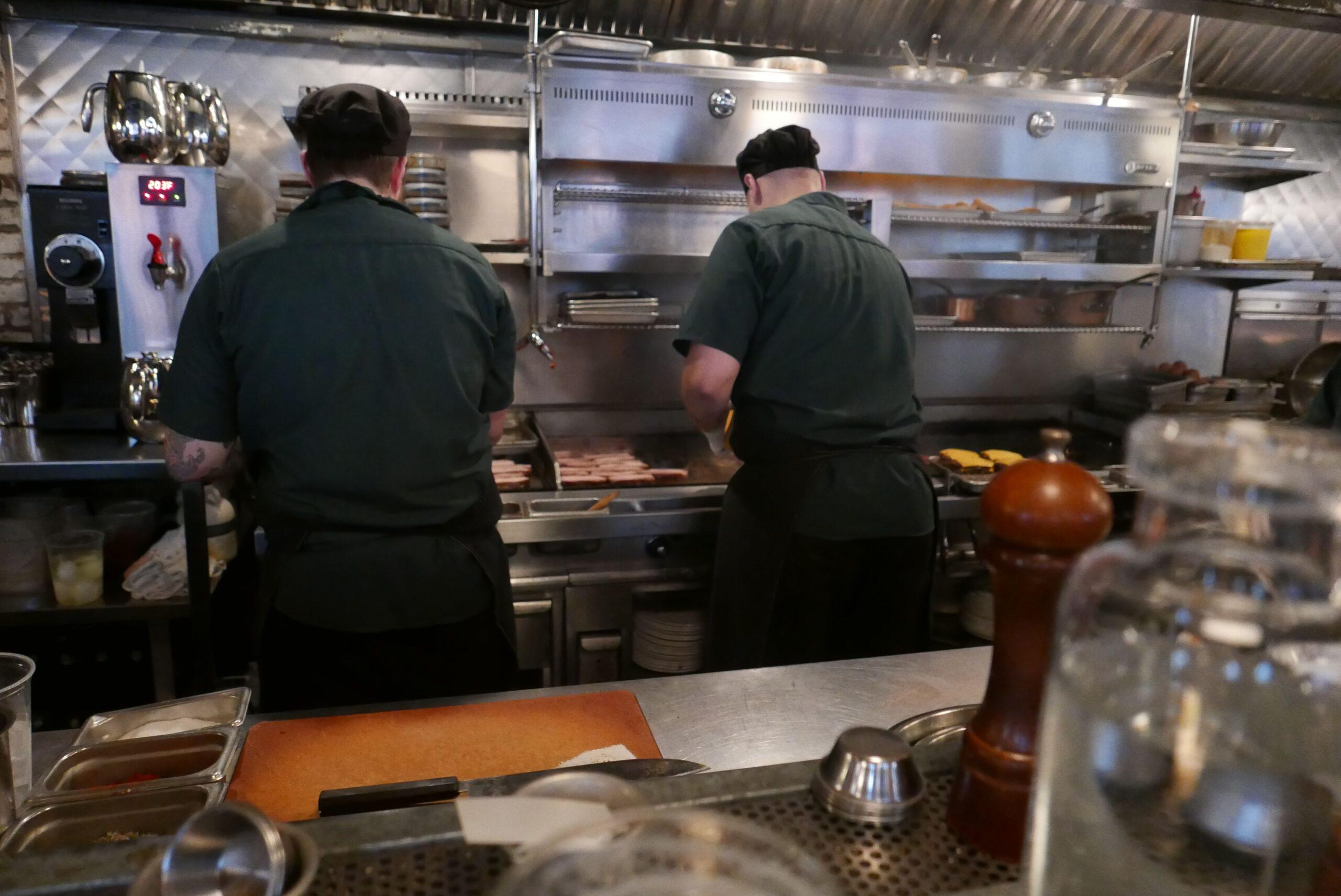
A bar seat is the way to go at Au Cheval. Part of the charm of the experience is watching the machine hum. With its open, diner-style kitchen, Au Cheval offers a distinct look into the momentum of a restaurant staff during rush hour. Of course, every hour is rush hour for Au Cheval, but within that unending chaos is an affirming sense of continuity. The constant turnover of guests means the internal timekeeping mechanisms are always running, and the rhythms of the kitchen go uninterrupted. Consider the line mentality as a kind of flow state. Dozens upon dozens of burger patties at a time, all being cooked in unison, all to medium doneness. Even amid the bustle, burgers make it from griddle to plate to table in a matter of minutes.
Au Cheval fancies itself an elevated diner experience, which means building upon truths that many Americans would consider self-evident. For instance: a double cheeseburger with two thin patties usually creates the optimal meat-to-bun ratio, so instead of exoticizing an accepted ideal, Au Cheval makes its regular cheeseburger with two patties and its “double” with three. It’s a joke the restaurant tells on itself: It’s bad at math, and pays that forward to the customer. It’s a restaurant where, for a lunch break, it’s OK to revel in ignorance. Here, one plus one does, indeed, equal three.
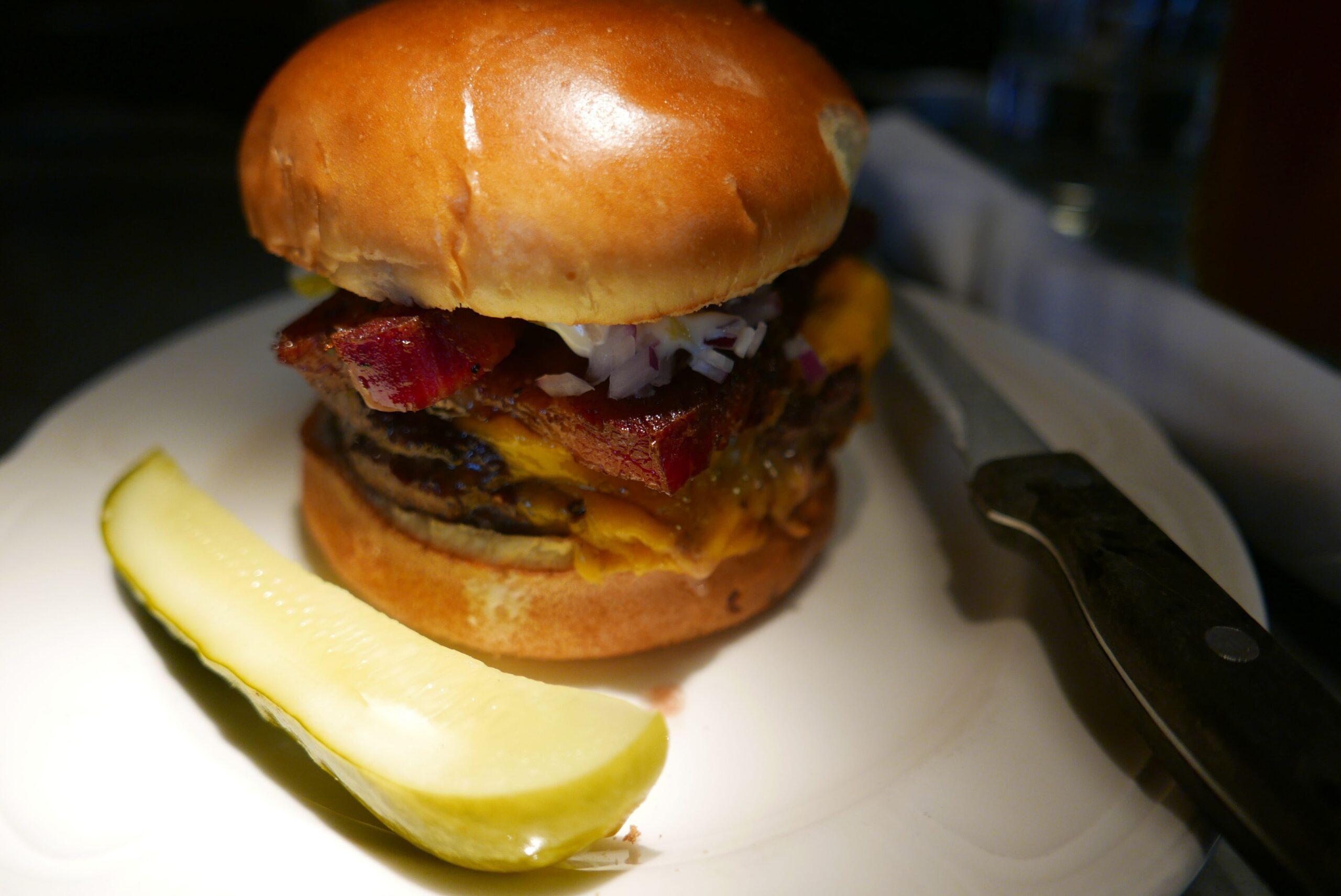
The burger is well constructed: top bun gets a healthy smear of dijonaise, topped by a water-lily arrangement of paper-thin pickle slices and diced red onions in the fashion of a McDonald’s cheeseburger. Then it’s two thick planks of maple-glazed bacon and two (or three) cheddar-topped beef patties on the bottom bun. It’s designed to offer a little bit of everything in each bite. The bacon is technically an add-on, but I’ll repeat the sage advice I got from nearly everyone I asked for recommendations: You have to get it with bacon.
While the bacon is cloyingly sweet on its own, when tempered by the acidic elements above and the patties below, it’s the light, smoky flavor that counterintuitively takes center stage. Because Au Cheval aims to preserve a pink middle in its patties, the beef doesn’t quite attain the hard, crusty sear of the diner burger of my dreams. In preserving juiciness, it sacrifices a little bit of that seasoned griddle-top magic. The bacon becomes a signal boost for the remaining Maillard flavors that we long for in a burger. Together, they build harmony. But it’s strange to think that the whole is that much better than the sum of its parts. I took out the bacon for my first bite; I couldn’t imagine that version of the burger being anywhere close to topping any lists. I left the cramped restaurant satisfied, but partially longing for my next visit to Little Jack’s Tavern in Charleston, where I’d be reunited with the burger of my dreams.
Goree
Recently, in my off hours, I’ve been watching YouTube videos of Senegalese mothers prepare various stews, imagining the union of certain ingredients and the way they evolve over long periods of simmering. I’ve found myself both immersed in the sense of discovery and grounded by the familiar rhythms and techniques employed by protectors of a culture I’m barely familiar with. It comes naturally, if only because many of the ingredients that form the bedrock of Senegalese stews — dried and preserved seafood — are also common in Vietnamese cooking (not to mention the shared bonds of French colonialism). I’ve learned about the word teranga, and how it permeates Senegalese culture at large. “Teranga is about the way we treat our guests,” Pierre Thiam, perhaps the most high-profile ambassador of Senegalese cuisine today, told The New York Times’ Tejal Rao last month. “It’s about the way that when you come into a Senegalese household, everyone moves so that you can fit in the circle and share their food and drink.”
Because of all this, my most anticipated meal in Chicago didn’t come from a Michelin-starred tasting menu or one of the city’s staples, but from Goree, a Senegalese restaurant less than two years old in the Kenwood neighborhood of Chicago’s South Side. Goree is technically an offshoot of Chie Nene, a family restaurant on the island of Goree, just off the coast of Senegal’s capital, Dakar. Owner Adama Ba used to work at Chie Nene as a child, hauling restaurant supplies by himself from the mainland to the island by ferry.
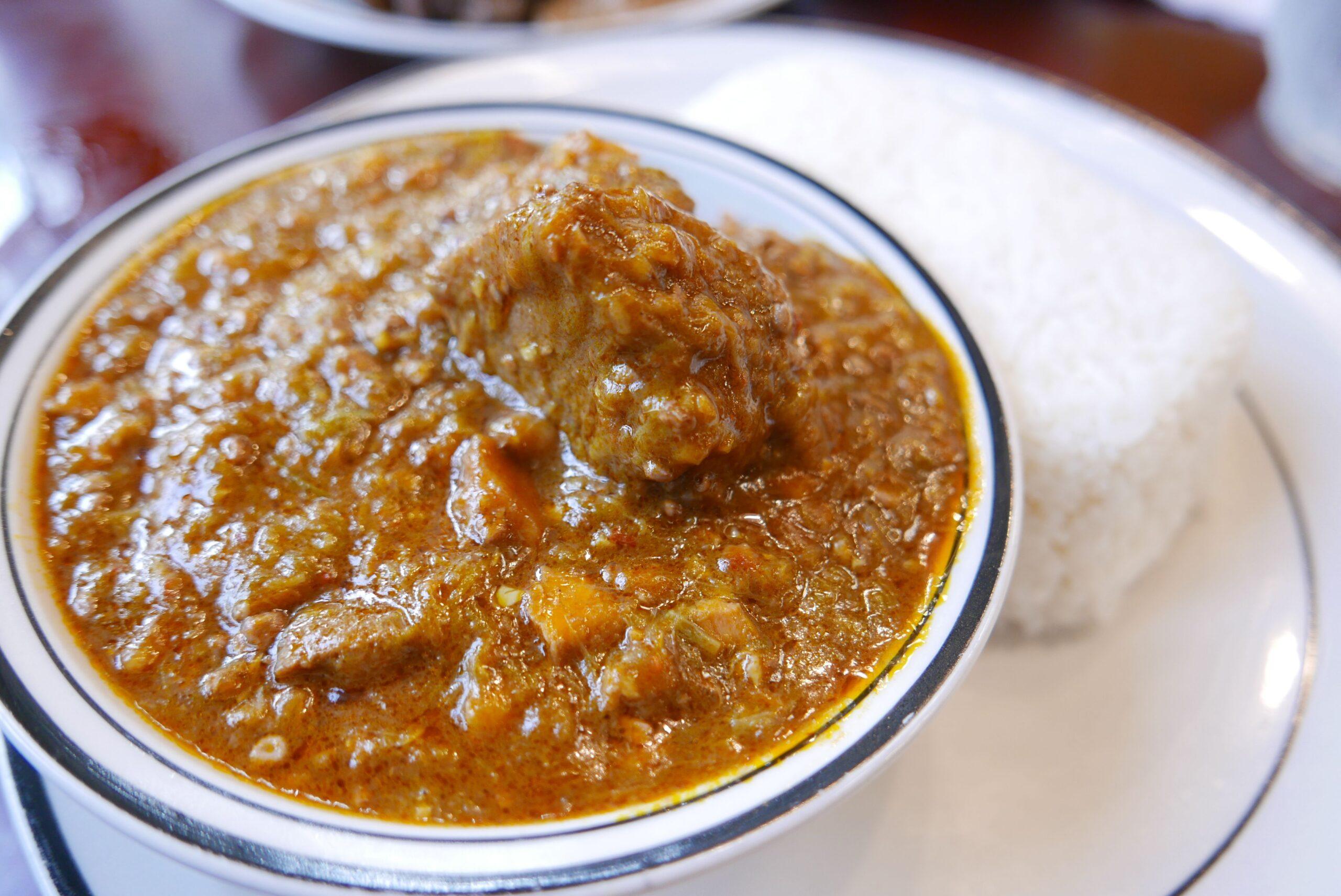
I knew what I wanted to order before even sitting down: soupe kandje (or soupe kandia), a stew of lamb, fish, and okra that triangulates some of my favorite cooking techniques. In its meticulous layering of proteins both land and sea (and heavy reliance on the thickening power of okra), it is evidently one of the key descendents of what Americans now know as gumbo. The use of seafood to amplify the flavor of meat is also an extremely Asian thing to do. And the flavoring agent nokoss — a combination of onions, garlic, and a litany of spices all ground up in a mortar and pestle — creates a baseline of flavor the way a sofrito, mirepoix, or holy trinity would in other cuisines.
It was just as I’d imagined: a comforting taste of familiar flavors rearranged into something I no longer recognized, but nonetheless felt a connection to. The lamb is cooked down until it’s meltingly tender, almost disintegrating into the thick gravy that surrounds it; it’s unflinchingly complex and funky, a byproduct of the dried and smoked fish that reconstitute in the cooking process. Soupe kandje isn’t the national dish of Senegal, but I knew that’s where I wanted to start. I can’t wait to dig deeper.
Jibaritos y Más
The desirability of specific foods evolves from context. The American rice now celebrated as Carolina Gold is a cultivar of a West African rice that was often eschewed by the Senegalese for the broken rice provided by French colonists by way of Vietnam. The byways of food culture are unpredictable and often unforeseeable. In 1996, Juan Figueroa flipped through an issue of El Vocero, the second-largest newspaper in Puerto Rico at the time, and read about a culinary oddity: the sandwich de platano — or, a sandwich that replaces bread with two pieces of fried plantain. Figueroa made one for his father, who soon asked for the sandwich repeatedly (which is essentially how all food-creation myths go). It wasn’t long before the sandwich de platano made it onto the menu of the family’s Humboldt Park establishment, Borinquen Restaurant. Figueroa would name the sandwich a jibaro or jibarito, a word that either carries pejorative connotations reflecting the unsophistication of rural life, or one that nods to the Puerto Rican ideal of a hard-working rural farmer.
Despite finding inspiration from his motherland, the jibarito was a uniquely Chicagoan phenomenon; within years, it was added to just about every Puerto Rican menu in the city. Even the Puerto Rican tourism bureau’s restaurant section has recognized it more as a Chicago delicacy.
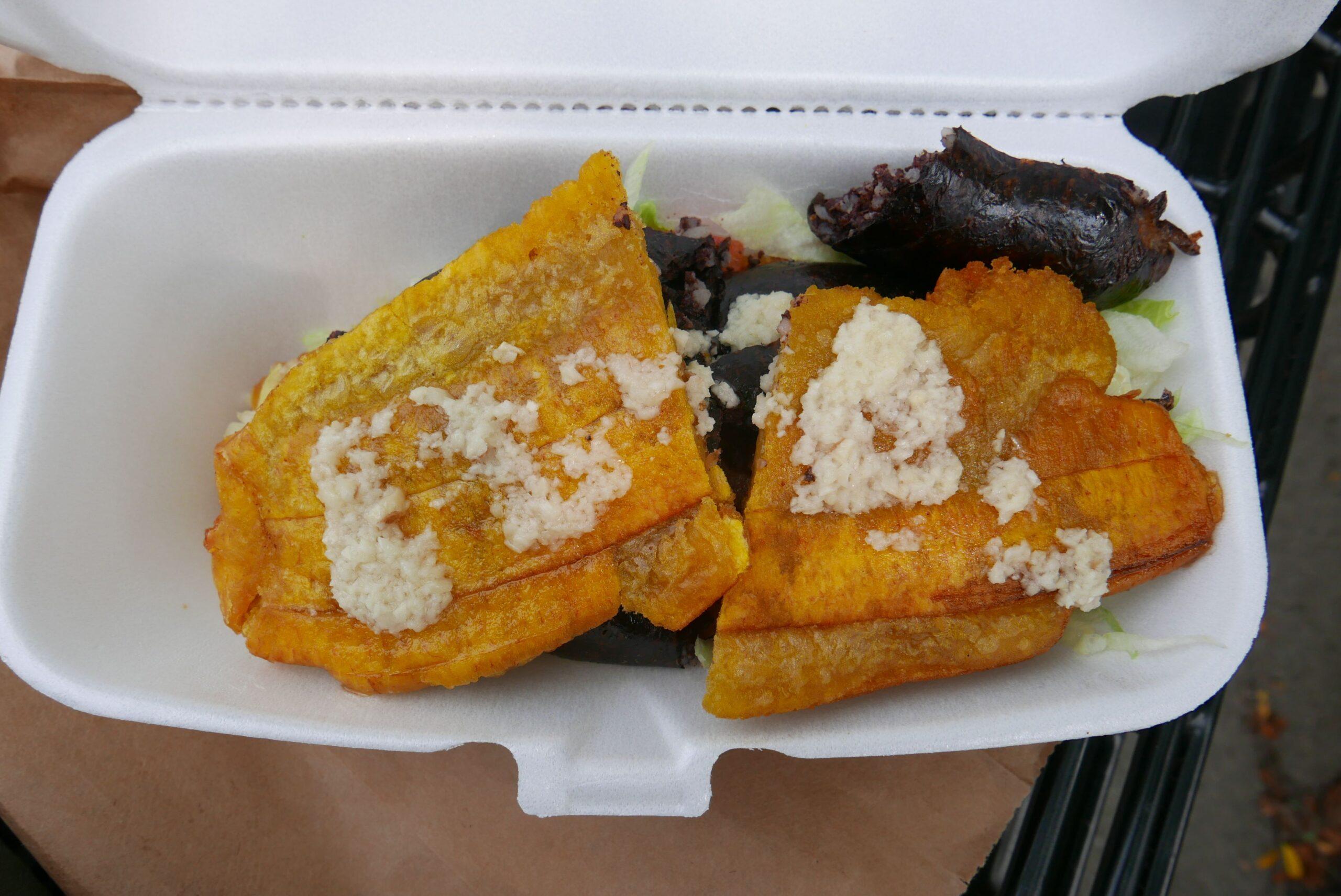
My first jibarito was from Jibaritos y Más, a perpetually busy nook in Logan Square, where patient customers pack the walking space so densely that restaurant employees have to Tetris their way through crowds to deliver food to sit-down customers. Steak is the most typical meat option for the sandwich, but I opted for the restaurant’s housemade morcilla, a mildly spicy blood sausage with an abundance of rice in the filling. It was a matter of both preference and logistics. Steak may be a no-brainer, but it’s prone to inconsistency; depending on the cut, how it’s cooked, and the way it’s layered onto the sandwich, it can be tough to bite through cleanly, which is an issue compounded by the rigidness of a deep-fried green plantain. Any sort of masticatory struggle threatens to upend the jibarito’s structure. Morcilla may have been the “exotic” option, but in my mind, it was safe: While firm, it yielded evenly and provided an ideal textural contrast to the dense crunch of the tostones.
After my first bite, on a park bench on a gorgeous Saturday morning, I lost control of my wits and inadvertently cursed out loud in front of several families. I wasn’t prepared for Jibarito y Más’s flame-orange hot sauce that tasted like a chile-infused olive brine. I wasn’t prepared for the garlic oil brushed on the top plantain piece. I wasn’t prepared for how quickly it all would hijack my pleasure centers. It was the most memorable bite of the trip, enough to turn me into an evangelist. The jibarito is a perfect food, and a snapshot of how I’ll think of Chicago from now until forever.
Johnnie’s Beef
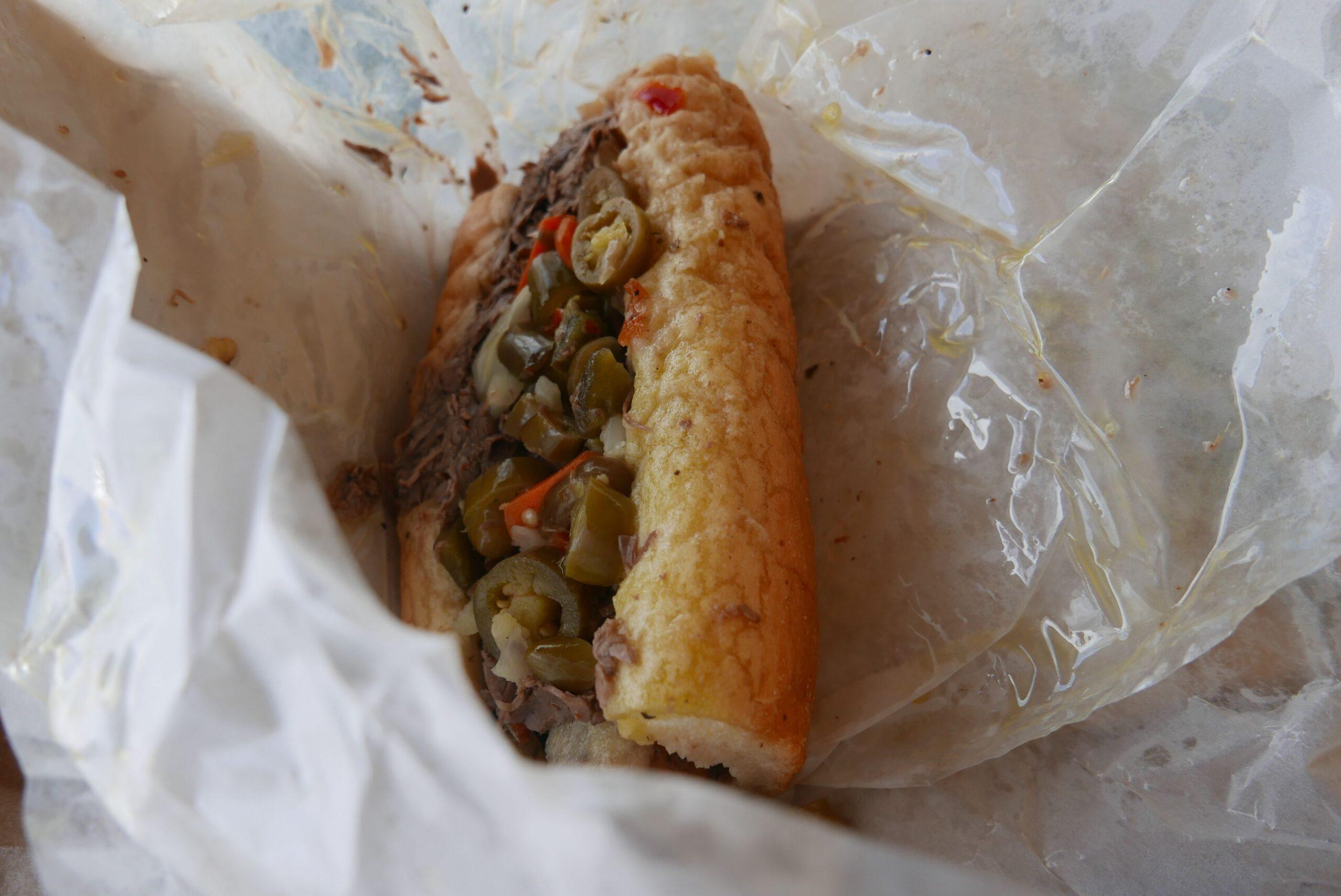
Whatchu know about Johnnie’s? That was the startled, almost defensive response from locals I got when asking whether Johnnie’s was indeed the spot for Italian beef. They were impressed with the homework I’d done, but I won’t give myself any credit. Johnnie’s was almost unilaterally the choice for best, though several claimed it wasn’t worth the trek outside city limits to Elmwood Park. Their argument: Johnnie’s might be better than Al’s, and Al’s might be better than Portillo’s, but ranking the city’s very best Italian beefs is examining the narcissism of small differences. Were those dissidents right? I won’t know for sure until my next visit, but I do know that, if we’re talking about form, I’d rather have an Italian beef over its regional cousins (the Philly cheesesteak, the L.A. French dip) any day.
What I quickly learned from my time in Chicago is that there’s always another layer of flavor to the sandwiches there, from the Au Cheval burger to the jibaritos. Order a “combo” and an Italian beef will come with a spicy Italian sausage, grilled rotisserie-style over charcoal, nestled deep within the bread, and completely buried under thin shreds of beef and giardiniera. I ordered a combo, juicy (the bread soaked through with roast beef jus), with hot peppers. The revelation at Johnnie’s was the bread, which seemed to have fibers as strong and elastic as spider silk. It reestablished order with every bite, conforming to the ways in which the sausage, peppers, and beef were displaced. It’s a truly phenomenal sandwich, and if you manage to arrive at a time without a line, you’ll get your sandwich before you finish paying for it. The lemon Italian ice is a nice side attraction; they’ll even shape the ice into a flower design if you ask nicely.
Birrieria Zaragoza
Stewed goat, in its myriad preparations around the world, is taxing work. There is sweat equity built into the process of finding the right level of gaminess to preserve in the dish, in capturing the essence of the meat and the bones without drowning in it. My dad’s goat stew, cooked with traditional Vietnamese medicinal herbs and spices, is legendary among his peers. One of his long-lost friends once traveled all the way to Los Angeles from Boston to taste it — and he gifted a first-generation iPod as a token of his appreciation. There were so many steps that seemed extraneous — the scrubbing, the vinegar bath, the quick blanch — but that persistence and devotion to the process was always part of what made it special. Goat has always been a canvas for ritual.
My favorite goat preparation is birria, a stew (generally goat, but also beef) with endless permutations across the states of Mexico. My first bite, roughly a decade ago, led to an instantaneous obsession. The late critic Jonathan Gold’s favorite birria in Los Angeles came from El Parian, about half a mile from Staples Center; my favorite in Los Angeles has long been from a tiny restaurant in Boyle Heights called Flor Del Rio, now Birrieria Nochistlan. After reading about the consensus that had emerged regarding Birrieria Zaragoza in Chicago’s Archer Heights, I was determined to find out whether Chicagoans have it as good as Angelenos.
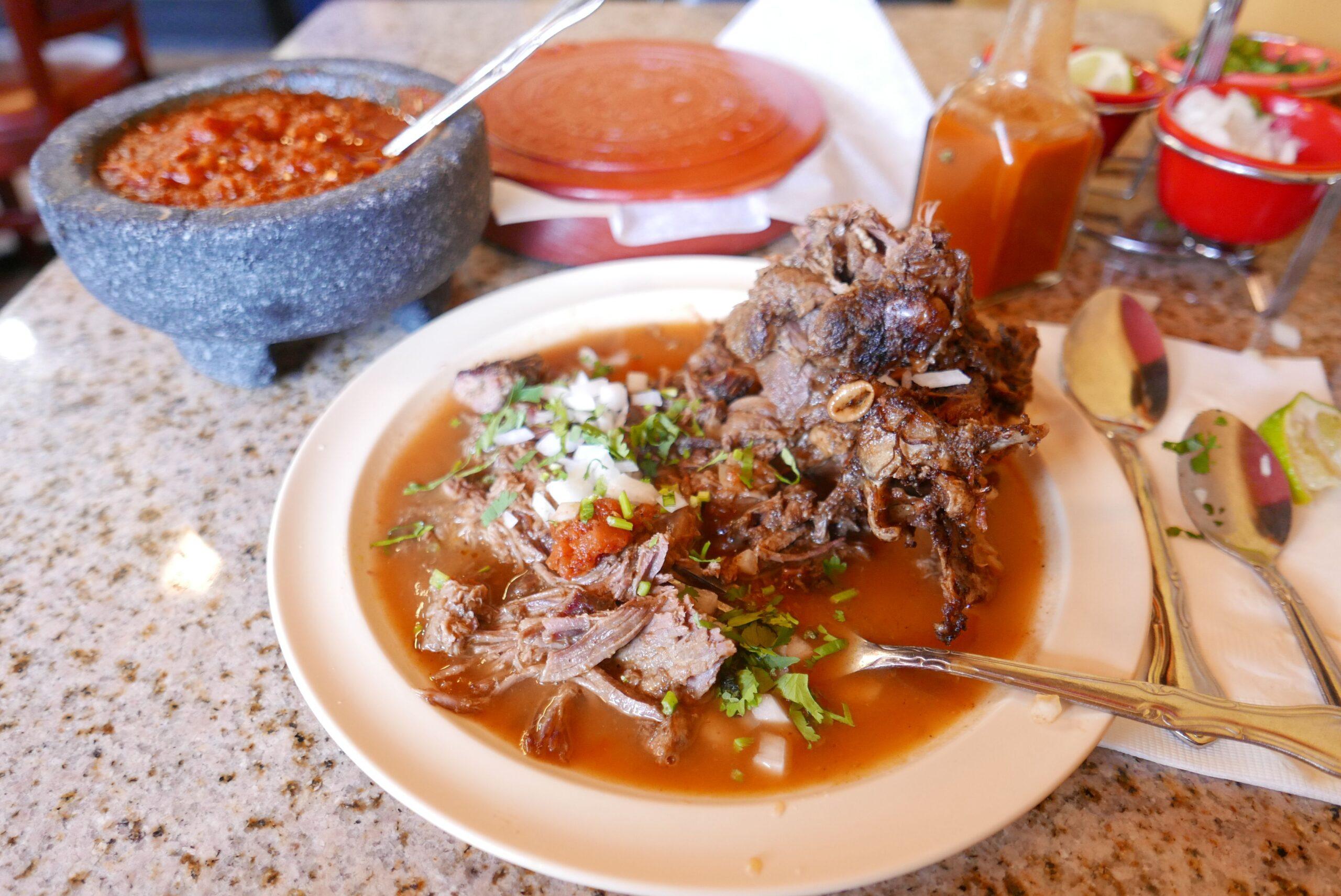
Zaragoza is a small operation: a handful of tabletops and six bar stools along the counter. After the bustle of the morning weekend rush, the restaurant settles into an afternoon lull. I tucked myself into a corner of the restaurant and then polished off a plate of bone-in goat meat with a light tomato consomme ladled on top. The broth didn’t quite have the meaty depth that I’m accustomed to, but that’s by design: The consomme is cooked without any fortification from goat parts, meant to accent the deep, roasted flavors of the meat.
With only a few diners in the restaurant in such close quarters, it was hard not to make conversation. With Jorge, a neighboring solo diner, and Norma, the co-owner of the establishment with her husband, Juan, we discussed everything from exotic fruits to her problems with a trash collection agency. Norma told us that Grant Achatz, Chicago’s most celebrated chef and one of the most acclaimed chefs in the world, is a regular; Rick Bayless, who has a stable of influential Mexican restaurants in the city, hasn’t visited, though she’s heard murmurs that their humble restaurant is brought up at nearly every staff meeting.
Dove’s Luncheonette
I resolved to visit one of the restaurants under Paul Kahan’s Chicago empire, and predictably landed at the one location where I could have a shot of mezcal for breakfast without any judgment. Outside, you’re likely to be greeted by crust punks unabashedly asking for contributions to their beer-and-cigarettes fund. Inside, you’ll walk into a strange amalgam of restaurant concepts: a ’50s-era all-day diner (complete with a jukebox that might be old enough to be your grandpa), a mezcal bar, and a modern Tex-Mex eatery all in a 40-seat space.
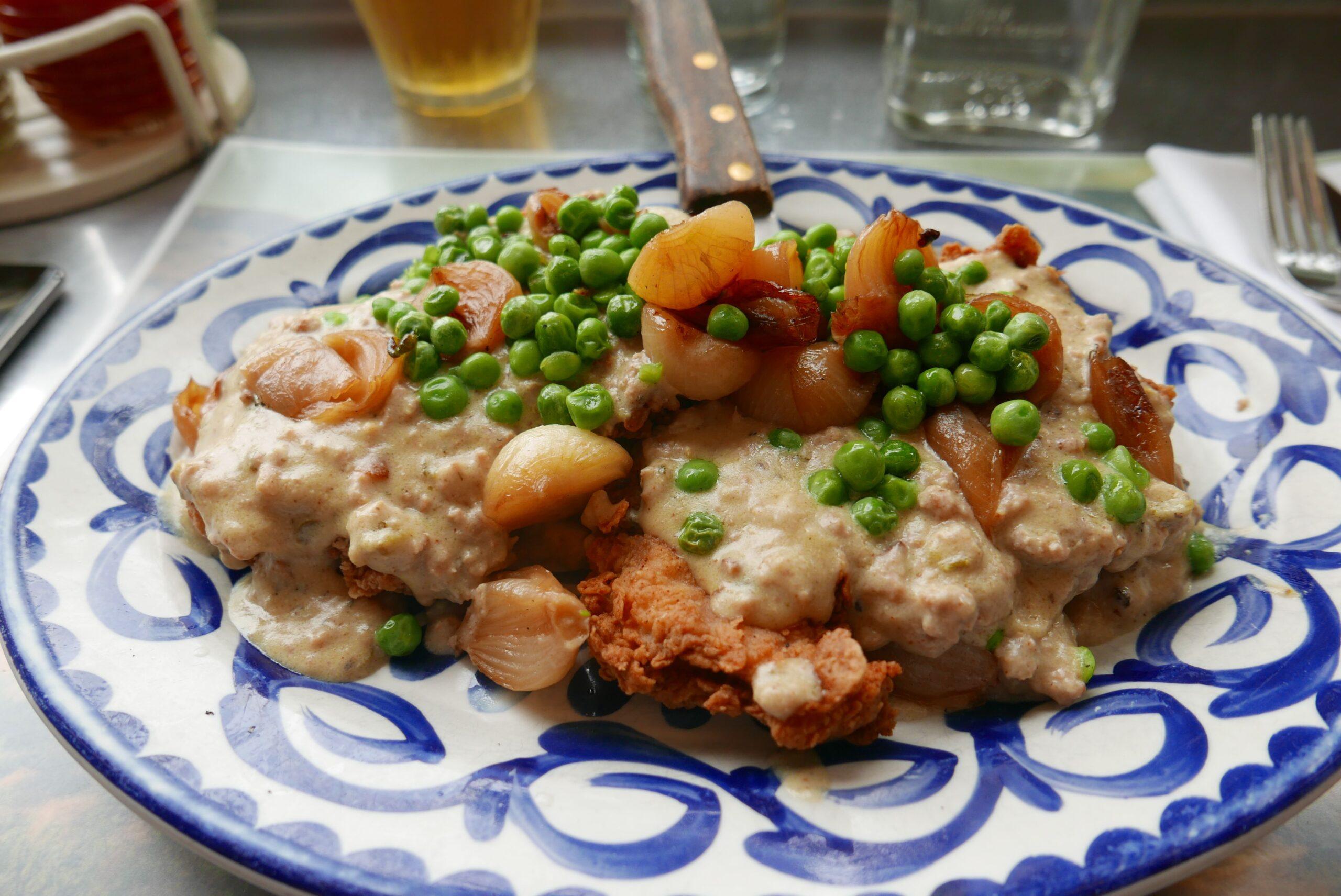
On the menu, Mexican hangover remedies like pozole and aguachile share the spotlight with eggs and grits and burnt-ends hash. Somewhere in the middle is the sweet-corn tamal filled with country ham and served with a mole verde. The chicken-fried chicken, though, is the showstopper: Two butterflied chicken thighs breaded, deep-fried, and smothered in a chorizo verde gravy, then dotted with peas and pearl onions. It looks like a gut-busting all-American plate, and it is. But there’s a lot hidden in the gravy. Chorizo verde gets its name (and its color) from a mash of cilantro, serrano peppers, and poblano peppers folded into the sausage mixture (at Dove’s, they add tomatillos for acidity) — these piquant profiles razor through the base roux of the sausage gravy and add depth to what could have easily been a one-note dish. Take it even further with the salsa macha found in the condiment caddy. That nutty, oil-based salsa with sesame seeds, peanuts, and a trio of guajillo, ancho, and chile de arbol ought to be spooned over everything in life.
Smyth
First impressions aren’t everything. The husband-wife duo of chefs John Shields and Karen Urie Shields met in 2003 while working in the kitchen of Chicago’s legendary Charlie Trotter’s; one day, Karen found a trail of black liquid that had gone from the dishwashing station all the way to the pastry area, where she was working. The trail had led her to John, the new guy, who had dripped squid ink all over the kitchen. She made her way over to him to reprimand him, but decided against it. In accordance with the butterfly effect, perhaps Chicago’s fine-dining landscape might not have seen the shift it has in the past two years if she had.
Smyth is a repository of experience in those 15 ensuing years, from Charlie Trotter’s to John’s time as a founding chef at Alinea, to the couple’s kindling romance and serendipitous trek out to Chilhowie, Virginia, to run a 35-seat restaurant, to the three years of unemployment that prefaced their current empire-building trajectory. It was a success almost instantly. It earned its first Michelin star six weeks into service; it earned its second early this year.
John kept notebooks full of ideas during the lull years, and it doesn’t seem like they’ve exhausted them quite yet. There is a nervous creative energy that buzzes from the kitchen and is channeled by the front-of-house staff. Over the course of a tasting, there will be maple-uni funnel cake, and brioche doughnuts served with 120-day-aged Pat LaFrieda ribeye jus for dipping (“I’ve been explaining this dish for two years now and it never gets old,” one server told me). When another server noticed I still had jus left in my cup, she encouraged me to knock it back like a shot.
All farm-to-table restaurants are subject to the whims of seasonality and the market, but one of the express goals of Smyth was to refine that relationship between restaurant and the providence of nature. The restaurant has an exclusive partnership with a 20-acre farm in Bourbonnais, a village roughly an hour south of Chicago. The farm grows roughly 200 different types of produce; the variety at Smyth’s disposal can take you to corners of the world you weren’t expecting to see. On the Thursday night in August when I visited, Malabar spinach and lemon balm — two cherished greens in my Vietnamese upbringing — were served alongside poached halibut with fermented green tea.
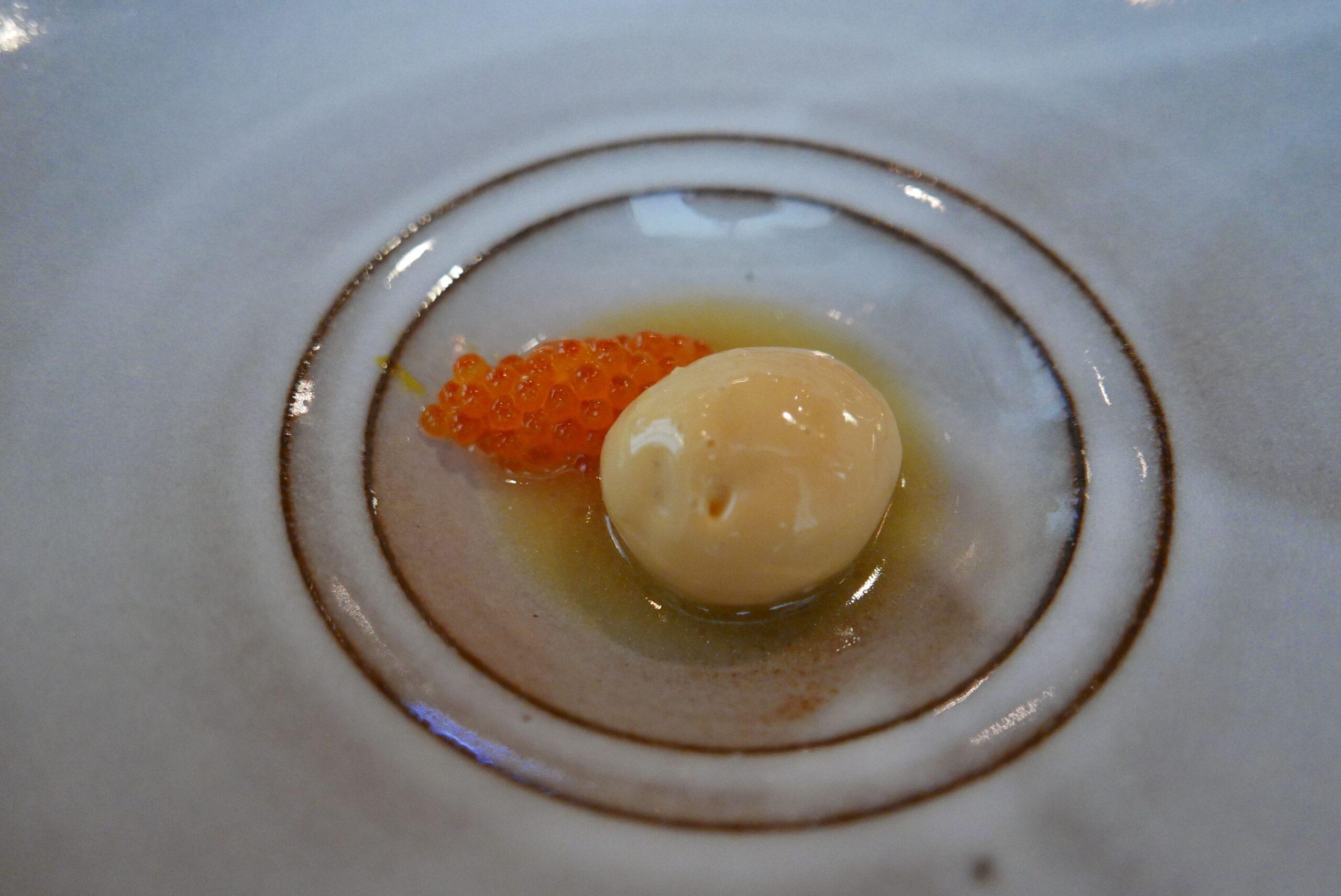
Menus are designed in dialogue: Surprise harvests from the farm can, of course, dictate changes to the menu on any given night, but the seeds of a new menu idea can also germinate before any actual seeds are planted. One dish I felt lucky to have experienced was a humble potato, no larger than a golf ball, draped in a jus of yeast and chicken stock fortified with dried scallops and a spoonful of cured California trout roe. The potato came via seeds from Row 7, a New York–based seed company founded by vegetable breeder Michael Mazourek and chef Dan Barber, one of America’s farm-to-table pioneers. Row 7 breeds produce for flavor; the Upstate Abundance potato, as it’s named, was specifically designed to create velvet-smooth starch granules that would mimic a potato that had been cooked in butter. Its silkiness is contrasted by the trout roe, which was selected for its particularly thick skin — the pressurized pop of the roe’s vessel feels more akin to a crunch. The jus keeps everything in orbit, a flavor every bit as complex and comforting as the Chinese superior stock (shang tang) it was likely modeled after.
Parachute
Parachute is a delightful restaurant and I’d love to talk about its delicate summer squash kimchi accented by sesame oil and strands of saffron, or its deeply satisfying fried soft-shell crab with black bean sauce, or its yellowtail poke made with young almonds and the late-summer cherries that seemed to be a popular ingredient in the city — but all I want to do is join the gospel of the restaurant’s most defining dish.
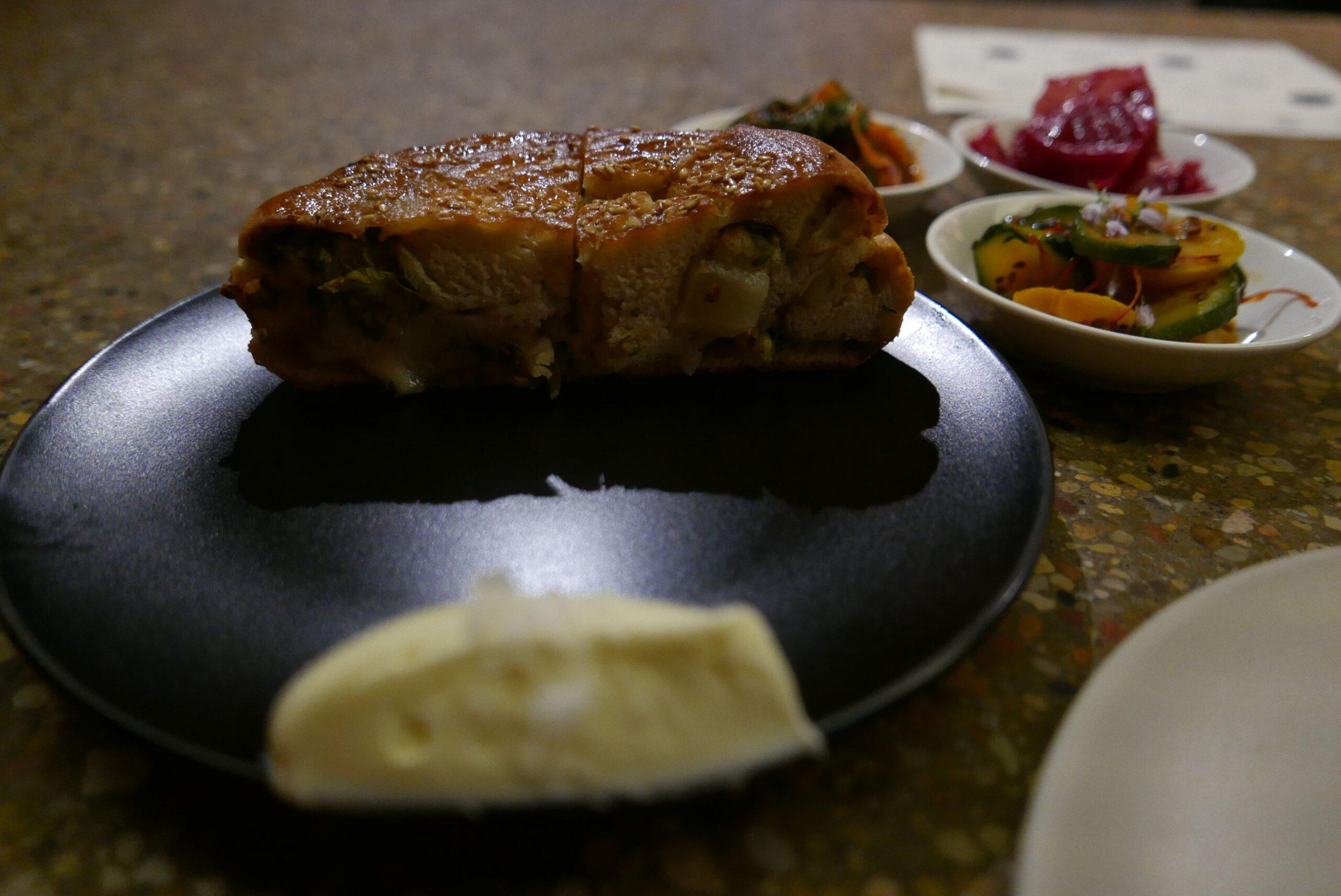
Parachute the manifestation of Top Chef Season 9 finalist Beverly Kim’s Korean American experience growing up in Chicago, but the restaurant’s most essential dish is rooted elsewhere. The baked potato bing bread is a tableau of the Midwest by way of Xinjiang, a vast autonomous region in northwest China with a population that mostly consists of ethnic minority groups, a majority of which practice Islam. Tucked in the rolls, waves, and folds of Parachute’s version of bing are hallmarks of American childhood memory — cubes of potato, white cheddar, scallions, and bacon, with a side of whipped sour cream butter — but in a form perfected by Islamic Chinese. Those familiar with bing may be more familiar with its flatter version; the type of bing that Parachute draws inspiration from is zhi ma da bing, a leavened sesame bread studded with scallions throughout. In college, my friends and I stumbled upon Mas’ Islamic Chinese, an enormous restaurant on a dilapidated business street in Anaheim mere minutes from Disneyland and close to one of those apocalypse-proof discount Hostess bakery outposts. There, we first discovered the joys of zhi ma da bing. The version at Parachute is stunning, regardless of context, but sometimes the best things about traveling away from home is finding the cultural tethers that bring you back.
Giant
I was ready to leave Giant, an enormously hyped restaurant for such a small space, sated but with a tinge of disappointment. It’s nominally a pasta restaurant, though a quick gloss over the menu suggests the team got a little distracted along the way. The king crab tagliatelle with a sharp, acidic chili butter sauce was excellent; the sweet corn quasi-succotash with Thai sausage, wrapped in a dosa, was less so. But I wanted to give it another shot (and I was on vacation). Instead of asking for the check, I asked my server: If there is one dish I can’t leave this building without ordering, what would it be? It took only a second of thought: the sweet-and-sour eggplant.
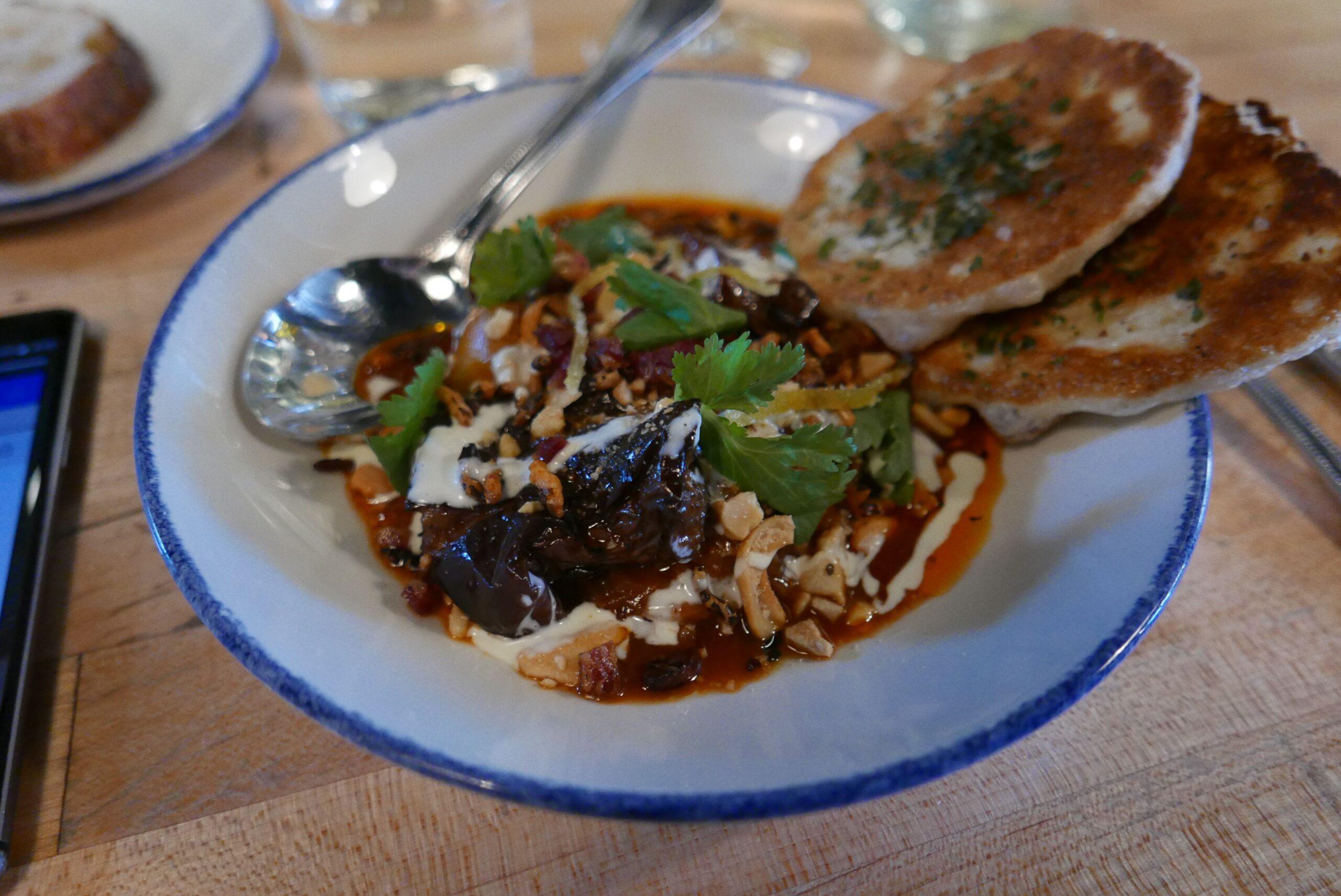
There was an unplaceable quality to the dish. In the cooking process, eggplant is often infused with qualities from more dominant ingredients around it to become something just east of recognizable. At Giant, it was coated in an intense sweet-savory sauce that tasted of hoisin, but also a bitter, burnt-lemon finish that rounded out the palate — not exactly the most Asian technique or ingredient. Plus, it was served with fried pitas with berbere spice. Sitting at the chef’s counter, I quizzed the cooks in front of me about its flavors. While the dish has gone through several permutations, the basis of the dish goes like this: eggplants are marinated in lemongrass and garlic, and then cooked in gochujang (among other ferments), rice wine vinegar, and candied lemon — essentially engorged with Asian flavors layered in a decidedly un-Asian way. What results is a tower of overwhelming flavors that all more or less balance one another out.
Perhaps it was the fried pita that shifted the focus away from the flavors my mind was already trying to process. Perhaps that was the point. In an essay on the universality of flatbreads in the upcoming food compendium You and I Eat the Same, Aralyn Beaumont notes that while some flatbreads (like pita) share historical lineage, “what’s enlightening is that much of it happened concurrently and separately. It seems hardwired into our nature: if we see a piece of bread and a piece of meat, we want to swaddle the latter in the former and put the whole thing in our mouths.” There is no need to dissect the origins of something as fundamental as that. My final bites at Giant were of an ethnically ambiguous preparation of eggplant, and I relished in the disorientation of it all.
Piece Pizzeria and Brewery
My final meal in Chicago was, in a way, honoring an experience I never got to live. There may never be another hot dog joint as acclaimed as Hot Doug’s, which was open from 2001 to 2014. On the final day of service, zealots lined up so early that they had to cut off the line four hours before Doug Sohn’s restaurant was slated to open. Imagine a hot dog being that good — that’s something I’ve thought about for years.
Doug’s cultish sausage has slowly reemerged in various forms and capacities in recent years, including a stand at Wrigley Field, but perhaps the easiest way to acquaint (or reacquaint) yourself with Hot Doug’s is at Piece, where they serve Hot Doug’s atomic sausage on a pizza. It’s my stoner dreams come true: specks of beautiful sausage highlighting the floral qualities of serrano, jalapeño, and habanero peppers on a sturdy, thin crust. I brought a few slices home to savor the memory. It really is some damn good sausage.
Yes, my last meal in Chicago was an enormous New Haven–style pizza. Yes, I didn’t have any deep dish. Forgive me, Ditka, for I have sinned.
